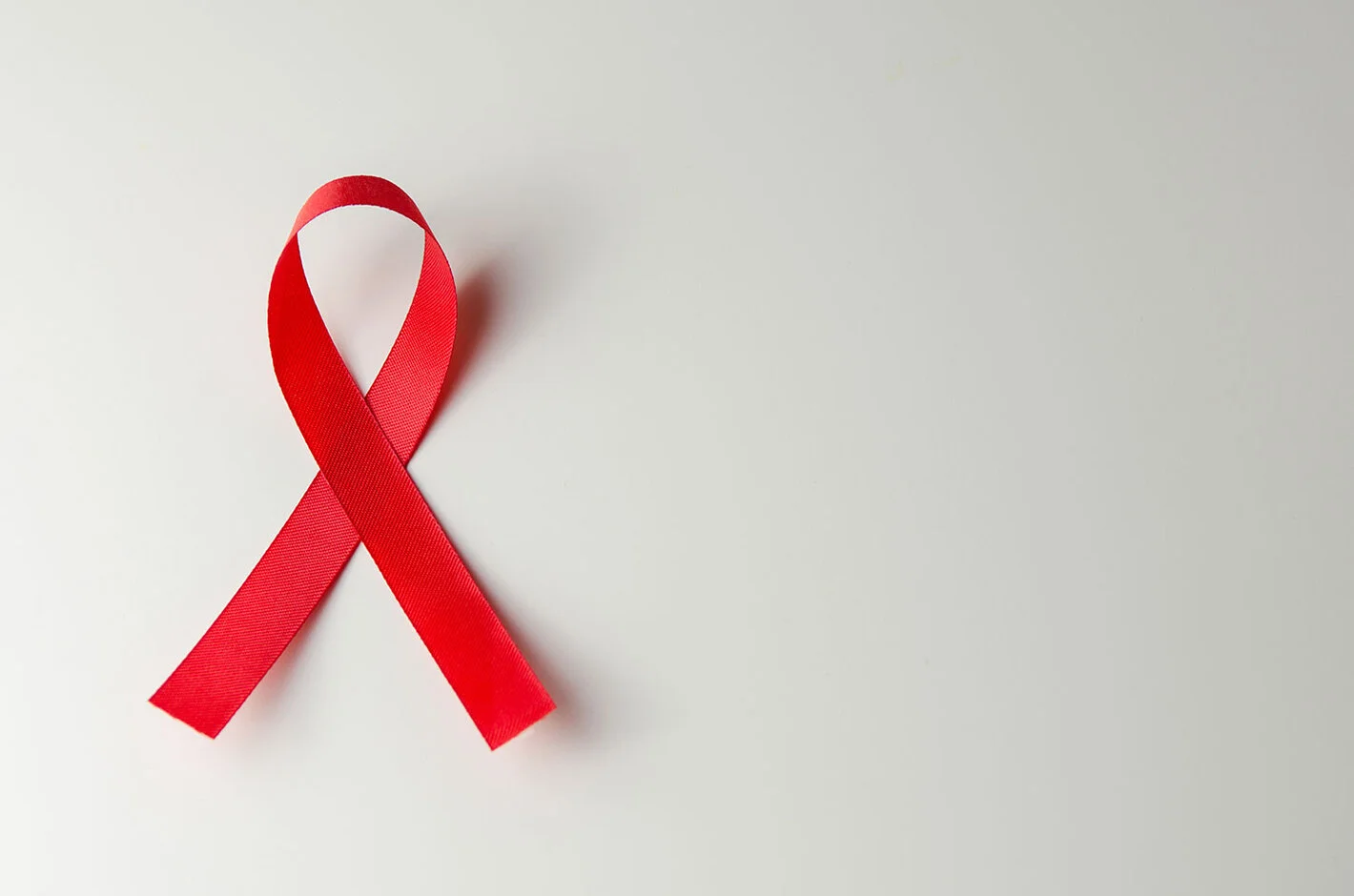KATHMANDU: As the nation observes the 36th World AIDS Day today, various awareness programs are underway, emphasizing understanding and prevention in the fight against the epidemic.
The chosen theme for World AIDS Day 2023 is “Let Communities Lead,” highlighting the pivotal role communities play in combating the disease.
The first detection of HIV/AIDS in Nepal dates back to 1988, and since then, the country has seen a total of 70,512 infections, with 29,518 individuals succumbing to the disease.
Among the affected, 29,000 are over 15 years old (16,000 males and 13,000 females), while 30,000 are below 15 years old.
In a recent interview with Khabarhub, Dr. Santosh Nanda Jha shared positive insights, noting a decrease in the number of HIV/AIDS patients visiting hospitals.
He attributed this decline to new medical practices and heightened public awareness.
Dr. Jha emphasized that individuals affected by the disease are now more open about discussing their challenges, contributing to reducing the stigma surrounding HIV/AIDS.
Additionally, the increased use of contraceptives and other medications has played a crucial role in curbing the number of new infections.
The combined efforts of medical advancements and a well-informed public have resulted in a positive trend, showcasing the impact of awareness campaigns and the importance of community-led initiatives in the ongoing fight against HIV/AIDS.
Key facts
- HIV remains a major global public health issue, having claimed 40.4 million [32.9–51.3 million] lives so far with ongoing transmission in all countries globally; with some countries reporting increasing trends in new infections when previously on the decline.
- There were an estimated 39.0 million [33.1–45.7 million] people living with HIV at the end of 2022, two thirds of whom (25.6 million) are in the WHO African Region.
- In 2022, 630 000 [480 000–880 000] people died from HIV-related causes and 1.3 million [1.0–1.7 million] people acquired HIV.
- There is no cure for HIV infection. However, with access to effective HIV prevention, diagnosis, treatment and care, including for opportunistic infections, HIV infection has become a manageable chronic health condition, enabling people living with HIV to lead long and healthy lives.
- WHO, the Global Fund and UNAIDS all have global HIV strategies that are aligned with the SDG target 3.3 of ending the HIV epidemic by 2030.
- By 2025, 95% of all people living with HIV (PLHIV) should have a diagnosis, 95% of those should be taking lifesaving antiretroviral treatment (ART) and 95% of PLHIV on treatment should achieve a suppressed viral load for the benefit of the person’s health and for reducing onward HIV transmission. In 2022, these percentages were 86(%) [73–>98%], 89(%) 75–>98%] and 93(%) [79–>98%], respectively.
- When considering all people living with HIV, 86% [73>–98%] knew their status, 76% [65–89%] were receiving antiretroviral therapy and 71% [60–83%] had suppressed viral loads.
Signs and symptoms
The symptoms of HIV vary depending on the stage of infection.
The disease spreads more easily in the first few months after a person is infected, but many are unaware of their status until the later stages. In the first few weeks after being infected people may not experience symptoms. Others may have an influenza-like illness including:
- Fever
- Headache
- Rash
- Sore throat.
The infection progressively weakens the immune system. This can cause other signs and symptoms:
- Swollen lymph nodes
- Weight loss
- Fever
- Diarrhoea
- Cough.
Without treatment, people with HIV infection can also develop severe illnesses:
- Tuberculosis (TB)
- Cryptococcal meningitis
- Severe bacterial infections
- Cancers such as lymphomas and Kaposi’s sarcoma.
HIV causes other infections to get worse, such as hepatitis C, hepatitis B and mpox.
Transmission
HIV can be transmitted via the exchange of a variety of body fluids from people living with HIV, such as blood, breast milk, semen and vaginal secretions.
HIV can also be transmitted during pregnancy and delivery to the child. People cannot become infected through ordinary day-to-day contact such as kissing, hugging, shaking hands, or sharing personal objects, food or water.
It is important to note that people with HIV who are taking ART and have an undetectable viral load do not transmit HIV to their sexual partners.
Early access to ART and support to remain on treatment is therefore critical not only to improve the health of people with HIV but also to prevent HIV transmission.
Risk factors
Behaviours and conditions that put people at greater risk of contracting HIV include:
a) Having condomless anal or vaginal sex;
b) Having another sexually transmitted infection (STI) such as syphilis, herpes, chlamydia, gonorrhoea and bacterial vaginosis;
c) Engaging in harmful use of alcohol and drugs in the context of sexual behaviour;
d) Sharing contaminated needles, syringes and other injecting equipment and drug solutions when injecting drugs;
e) Receiving unsafe injections, blood transfusions and tissue transplantation, and medical procedures that involve unsterile cutting or piercing; and
f) Experiencing accidental needle stick injuries, including among health workers.
Diagnosis
HIV can be diagnosed through rapid diagnostic tests that provide same-day results. This greatly facilitates early diagnosis and linkage with treatment and prevention.
People can also use HIV self-tests to test themselves. However, no single test can provide a full HIV positive diagnosis; confirmatory testing is required, conducted by a qualified and trained health or community worker at a community centre or clinic.
HIV infection can be detected with great accuracy using WHO prequalified tests within a nationally approved testing strategy and algorithm.
Most widely used HIV diagnostic tests detect antibodies produced by the person as part of their immune response to fight HIV. In most cases, people develop antibodies to HIV within 28 days of infection.
During this time, people are in the so-called window period when they have low levels of antibodies which cannot be detected by many rapid tests, but may transmit HIV to others.
People who have had a recent high-risk exposure and test negative can have a further test after 28 days.
Following a positive diagnosis, people should be retested before they are enrolled in treatment and care to rule out any potential testing or reporting error.
While testing for adolescents and adults has been made simple and efficient, this is not the case for babies born to HIV-positive mothers.
For children less than 18 months of age, rapid antibody testing is not sufficient to identify HIV infection – virological testing must be provided as early as birth or at 6 weeks of age.
New technologies are now available to perform this test at the point of care and enable same-day results, which will accelerate appropriate linkage with treatment and care.
Prevention
HIV is a preventable disease.
Reduce the risk of HIV infection by:
- Using a male or female condom during sex
- Being tested for HIV and sexually transmitted infections
- Having a voluntary medical male circumcision
- Using harm reduction services for people who inject and use drugs
- Doctors may suggest medicines and medical devices to help prevent HIV, including:
- Antiretroviral drugs (ARVs), including oral PrEP and long acting products
- Dapivirine vaginal rings
- Injectable long acting cabotegravir.
ARVs can also be used to prevent mothers from passing HIV to their children.
People taking antiretroviral therapy (ART) and who have no evidence of virus in the blood will not pass HIV to their sexual partners. Access to testing and ART is an important part of preventing HIV.
Treatment
There is no cure for HIV infection. It is treated with antiretroviral drugs, which stop the virus from replicating in the body.
Current antiretroviral therapy (ART) does not cure HIV infection but allows a person’s immune system to get stronger. This helps them to fight other infections.
Currently, ART must be taken every day for the rest of a person’s life.
ART lowers the amount of the virus in a person’s body. This stops symptoms and allows people to live a full and healthy life. People living with HIV who are taking ART and who have no evidence of virus in the blood will not spread the virus to their sexual partners.
Pregnant women with HIV should have access to and take ART as soon as possible. This protects the health of the mother and will help prevent HIV from passing to the fetus before birth, or to the baby through breast milk.
Antiretroviral drugs given to people without HIV can prevent the disease.
When given before possible exposures to HIV it is called pre-exposure prophylaxis (PrEP) and when given after an exposure it is called post-exposure prophylaxis (PEP).
People can use PrEP or PEP when the risk of contracting HIV is high; people should seek advice from a clinician when thinking about using PrEP or PEP.
Advanced HIV disease remains a persistent problem in the HIV response. WHO is supporting countries to implement the advanced HIV disease package of care to reduce illness and death.
Newer HIV medicines and short course treatments for opportunistic infections like cryptococcal meningitis are being developed that may change the way people take ART and prevention medicines, including access to injectable formulations, in the future.









Comment